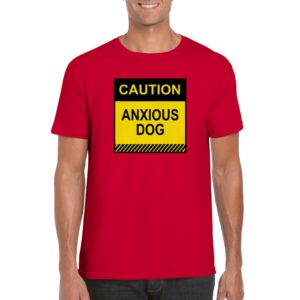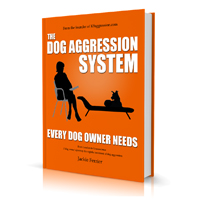Your cart is currently empty!
BRAIN CHEMISTRY OR CHEMICAL IMBALANCES
Serotonin plays an important role in the neuro-chemical control of aggression in the brain, especially when a component of impulsivity is present. Studies have shown that serotonin levels in aggressive dogs are not the same as normal dogs. (1) (2) Lower serotonin levels is also found in human conditions like impulsive aggression, clinical depression, obsessive compulsive disorders, etc., (3) Norepinephrine, dopamine and gamma-aminobutyric (GABA) are other neurotransmitters in the brain that can be involved in anxiety, mood regulation and cognitive function. Neurotransmitters often work together and have an affect on each other. Some neurotransmitters replenish more quickly that others. Experiences, stress and diet are some of the things that can affect neurotransmitter levels.
How is it determined whether a dog has a chemistry imbalance?
There is always a learned component to aggression so it can be challenging to diagnose an chemistry imbalance unless you are a veterinary behaviorist and have been trained to recognize what behavior is normal and species typical and what behavior is not. This is important because aggression is only one symptom of a of a chemical imbalance. A veterinary behaviorist suspects a chemical imbalance only after taking a detailed history from you and will look for other behaviors that may be out of the ordinary.
For example, some dogs who may be aggressive as a result of a generalized anxiety disorder may find it hard to relax at any time in a new environment, even when he or she has been there for some time. This can be observed in a clinical setting. The dog may continue to pace longer than normal, or if they lie down, they may not fully settle. There heads may stay upright, or their limbs may still be tightly pulled into the body. Other dogs won’t explore a new environment at all, instead preferring to stay close to their owner, or even hiding.
There are many other indications that the aggression problem maybe a result of a brain chemistry imbalance that may not be observed in a clinical setting, but will be revealed when the veterinary behaviorist is able to interview the dog owners.
How is it treated?
As with humans, there are a number of medications that can help behavior modification depending on the dog and the underlying mechanism of the problem. The family of SSRI drugs, medications such as Prozac or Zoloft have had the most success in combination with “therapy” i.e. behavior modification techniques in treating aggression for those dogs who need it. However due to the learning component involved in aggression, medication alone without behavior modification usually can only go so far. However, in dogs that need medication, behavior modification is an uphill battle without it.
Learn more about medications prescribed for dog aggression.
References
(1) Reisner IR, Mann JJ, Stanley M, Huang Y, Houpt KA: Comparison of cerebrospinal fluid monoamine metabolite levels in dominant-aggressive and non-aggressive dogs. Brain Res 1996, 714: 57–64. 10.1016/0006-8993(95)01464-0
(2) Amat M, Le Brech S, Camps T, Torrente C, Mariotti VM, Ruiz JL, Manteca X: Differences in serotonin serum concentration between aggressive English cocker spaniels and aggressive dogs of other breeds. J Vet Behav:Clin Appl Res 2013,8(1):19–25. 10.1016/j.jveb.2012.04.003
(3) Seo, D., Patrick, C. J., & Kennealy, P. J. (2008). Role of Serotonin and Dopamine System Interactions in the Neurobiology of Impulsive Aggression and its Comorbidity with other Clinical Disorders. Aggression and Violent Behavior, 13(5), 383–395. http://doi.org/10.1016/j.avb.2008.06.003
ADVERTISEMENT

Keep people away with our Stand back shirts

Anxious Dog Shirts only available in our shop

